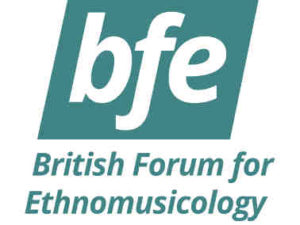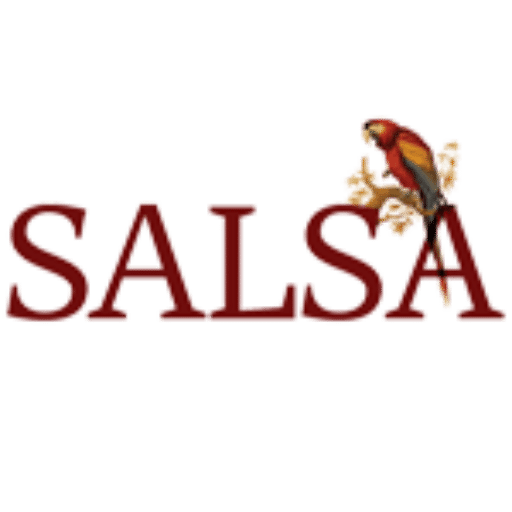
SALSA members presenting at BFE 2020 (2-12-20, Update 3-20-20)
SALSA members presenting at BFE 2020
 [UPDATE 3-20-20: Due to the COVID-19 pandemic the BFE Conference has been postponed for 2021]
[UPDATE 3-20-20: Due to the COVID-19 pandemic the BFE Conference has been postponed for 2021]
SALSA Members Matthias Lewy, Bernd Brabec de Mori and Juan Castrillón will be presenting their work at the British Forum of Ethnomusicology (BFE) 2020
In this occasion, the BFE will gather scholars under the theme Music, Culture and Nature during April 16-19 2020 at Bath Spa University, UK. On Thursday 4/16, Juan Castrillón will screen his film ~Kiraiñia (Long Flutes); on Friday 4/17, Matthias Lewy will present his paper titled Meaning of Bird Sounds in Indigenous Sound Ontologies: Landscape, Environment, and Non-Human Agencies in the Guianas; and on Saturday 4/18, Bernd Brabec de Mori will present his paper titled Sounding Indigenous Against Global Ecological Crises: a Case from the Western Amazon.
Find here the full abstracts of these SALSA Members presenting at the BFE 2020, and mark these days in your calendars if you happen to be around Bath in mid-April 2020.
[expand title=”~Kiraiñia (Long Flutes) (Juan Castrillón, University of Pennsylvania)” tag=”h3″]
Are perspective and voice organs of a body? And if they are, what happens to a body when they are shared with other voices and perspectives? Whose perspective and voice are we watching on film? Whose voice is telling the story when reported speech and masked sounds are the norm within certain communication ideologies? How do we make sense of all of this if we take Amerindians seriously when they say instruments have voices, and their presence renders the bodies of the ancestors?
~Kiraiñia (Long Flutes) is an essay film about how an instrument sounds like. The film is a deep immersion into the process of remaking instruments and affect in an Amazonian community living at the Uaupés River Valley in Southern Colombia. The film renders the resilience of the Emi-Hehenewa community to assemble emotion and memory out of a recent present in which their ritual and expressive practices were prohibited and pulled them apart by Catholic and Protestant missionaries during the mid-nineteen fifties. In its essayistic gesture, the film puts together broken pieces of the everyday shared by this community and an ethnomusicologist in their common attempt to remember and retell how these instruments sound like. The film came out from an ethnographic research project in Lowland South America. From its scholarship approach, the film breaks the factual perspective of ethnomusicological films about instruments by opening a cinematic dialogue informed by Emi-Hehenewa nonlinear linking and storytelling. And on the other hand, the film re-pairs the multilingual and perspectival exchange between indigenous and non-indigenous audiences as part of an ethical commitment to co-produce new media affordances for world making.
[/expand]
[expand title=”Meaning of Bird Sounds in Indigenous Sound Ontologies: Landscape, Environment, and Non-Human Agencies in the Guianas (Matthias Lewy, Lucerne University of Applied Sciences and Arts)” tag=”h3″]
Based on 15 years of ethnomusicological lived experience in the field, examples from indigenous groups (in particular Pemón) in the Guianas (Venezuela/Northern Brazil/Co-operative Republic of Guyana) will be used to demonstrate how bird sound is defined in the interaction between all entities of the collective (human/non-human). I will focus on trans-specific communication, which can be observed both in the production of formalized sounds (e.g. shamanic songs) and in the practice of listening.
The first part provides a brief introduction to animistic ontologies and their relationship to sound, focusing on indigenous perspectivism and indigenous sonorism. The second part offers some examples of native sound ontologies in relation to taxonomically relevant birds. For example, when hearing the voice of the wantoto bird, indigenous specialists explain that the sound is made by the maikok, human-spirit beings that are invisible yet audible beings. When Pemón people hear the wantoto sound, they know that they have entered maikok territory and, thus, have to either leave food offerings or take another route. Therefore, the wantoto sound is considered an agent that prompts an everyday trans-specific behaviour based on the indigenous ontological bias. Other examples will demonstrate how bird sounds in relation to kanaima entities (human/non-human hybrids that kill humans) frighten humans and are hence avoided, as well as other bird sounds that are transformed into magic formulas and songs in shamanic ritual practice. Finally, I will present a sound ontological typology that shows the role of bird sounds in the Pemón multiverse.
See Mathias Lewy‘s paper at the XII SALSA Sesquiannual Conference (Panel 2)
[/expand]
[expand title=”Sounding Indigenous Against Global Ecological Crises: a Case from the Western Amazon (Bernd Brabec de Mori, Uni Graz)” tag=”h3″]
Widespread notions of global ecological crisis including climate change and anticapitalistic critique are thought to likewise impact Amazonian ecological and social systems. Indigenous and local non-indigenous mestizo people in the Peruvian lowlands, however, do not perceive these hyperobjects (Timothy Morton), but rather face challenges dealing with “good” or “bad” outsiders. Among the latter we find palm-oil or petrol entrepreneurs, and cattle herders, for example, while the first category is made up by tourists, researchers, and so-called “shaman apprentices”. Global hyperobjects are introduced to Indigenous people almost exclusively via these actors.
Based on long-term fieldwork (since 1998) in the region including recent engagement with “shaman apprentices”, this paper deals with Indigenous responses to above mentioned global threats. The Shipibo-Konibo people of the Peruvian lowlands have become famous for their “shamanic knowledge” that prominently features vocal music and sonic interactions with plants, animals, and the wider local environment. This system has mainly been concerned with local healing, social problem-solving, and protecting kin people from harmful encounters with the non-human. Visitors from mainly North America and Europe, however, entangled in global inequalities of finance power and carbon dioxide, seek to establish a personal, “alternative” positioning in this network and to contribute to changing the global system. They embark on studying Indigenous techniques for understanding and manipulating the wider environment, based on the song-techniques of “ayahuasca shamanism” (involving the ingestion of the hallucinogenic plant brew ayahuasca). Indigenous methods are appropriated and transformed into a counter-culture marching against looming capitalist and ecological threats.
See Bernd Brabec de Mori’s book Die Lider der Richtigen Menschen: Musikalische Kulturanthropologie der indigenen Bevölkerung im Ucayali-Tal, Westamazonien (“Songs of the Real People. A Musical Anthropology of Indigenous People in the Ucayali Valley, Western Amazon”)
[/expand]
